Early on a Sunday morning last summer, the villagers of Epulu awoke to the sounds of shots and screaming. In the eastern reaches of the Democratic Republic of the Congo, that can often mean another round of violence and ethnic murder is under way. In this case, however, something even more horrific was afoot.
The village was under attack from a feared militia. In this case, the gunmen were motivated not by tribal rivalry but by land, gold and ivory. The village is situated inside a nature reserve in the Ituri rainforest, an area covering 5,000 square miles that is supposed to be off limits to hunters and gold prospectors. The militia, led by a former elephant poacher called Paul Sadala, has terrorised communities inside the reserve since 2012, employing methods brutal even by the grisly standards of this part of the world.
“The attacks were absolutely terrifying,” said Justin Oganda, a representative of the residents of Epulu who remain displaced in Mambasa, about 50 miles away. By the end of that day in June, the militiamen had murdered, raped, burned people alive and even eaten the flesh and heart of one of their victims. “To have killed so many people, to burn them alive, the cannibalism … Mentally they cannot be normal,” Oganda added.
As ever with Congo, it is not just a simple tale of victims and villains. Sadala, who goes by the nom de guerre Morgan, and his “Mai Mai Morgan” gunmen are thought to have powerful supporters in the security forces who enable their lucrative illegal trade in ivory and smuggled gold. Some local people with an eye on the gold in the ground beneath their feet tacitly support Morgan, who improbably also likes to be called Chuck Norris.
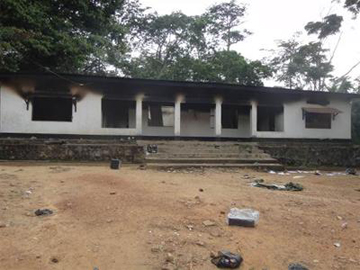 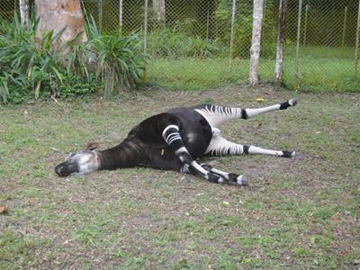 Top: the burned headquarters at the Okapi Wildlife Reserve. Bottom: one of the killed okapis. Photos courtesy of UNESCO. |
“There is complicity between [Morgan] and certain elements within the army,” said Jefferson Abdallah Pene Mbaka, the MP for Mambasa. “With the support of certain army authorities [Mai Mai Morgan] have increased their poaching activities. The sale of ivory is organised by these figures in the army.” Many people in the region believe soldiers have orders not to arrest Morgan.
Morgan’s principal targets are those who operate and police the Unesco-recognised world heritage site known as the Okapi wildlife reserve, or by its French acronym, RFO. The laws of the reserve forbid the hunting of endangered species, especially elephants and okapi, and the exploitation of its gold reserves.
The headquarters of the park rangers is in Epulu, the village targeted in the attack last June. “Their goal was to kill all the guards, but most of us escaped,” said Captain Benjamin Kalimutima Lulimba, a park ranger living in Epulu. “They murdered two guards, Fiston and Badus, and the wife of a guard called Amisi. They tied up Badus and Amisi’s wife, put them inside a tyre and burned them alive. Then they cut and ate part of Fiston’s leg, and they cut out his heart and ate it.”
A group of militia fighters then broke off and moved towards the okapi zoo in the rangers’ compound. The zoo had been established 25 years ago to house a small number of the timid and endangered okapis that are the familiar image of Congo’s diverse fauna. Morgan’s men slaughtered 13 of the 14 okapis there, and wounded the 14th so gravely it later died from its injuries. For Rosmarie Ruf, a conservationist with Gilman International Conservation (GIC) and co-founder of the zoo, this was the brutal end to a lifetime’s work. “Twenty-five years of work is gone,” said Ruf, sitting metres from the empty okapi pen as the Epulu river rushed past. “All that effort, all that money. It’s my life which has been … I don’t want to say ruined, but here now I’m standing in front of nothing.”
The suspicion is that at least some of Morgan’s booty winds up 280 miles south-west of Epulu, in the hands of the Congolese army. At the end of 2012 the United Nations group of experts on Congo issued a report that accused Congolese general Jean Claude Kifwa in the provincial capital, Kisangani, of giving “arms, ammunition, uniforms and communication equipment to Mai Mai Morgan in exchange for ivory”.
Kifwa has vigorously denied any link to the militia, but one of Morgan’s fighters, captured and held in prison in the district capital, Bunia, confirmed the trade with figures in Kisangani. “Morgan sent gold and ivory to Kisangani and our weapons came from there,” said Basomaka Abundu, who took part in Morgan’s attack on Mambasa in January.
Despite the brutality of the attacks, many reserve dwellers express sympathy for Morgan, with some even confessing to outright support for him. “I am behind Morgan,” said an 18-year-old in a small village not far from Epulu who refused to give his name. “Because Morgan is here the rangers cannot patrol and we are free to dig for gold. But I wouldn’t support him if he came here and burned our homes.”
Most people, however, have a more nuanced position, saying that although revolted by his methods, they support his stated desire to see the size of the reserve reduced and more rights given to locals to hunt and dig.
“The forest is where we find what we need to survive,” said Matope Mapilanga, the leader of a Pygmy community on the edge of the reserve. “[The park authorities] have cut our land, there is now a part we cannot access. It has worsened in the last few years, since the RFO got bigger. We would prefer that the people of the RFO weren’t in our forest. We feel like the big non-governmental organisations and the rangers have privileged the animals over the people.”
The conservationists remain unconvinced, though. “The people who say they support Morgan are just those people who want to dig gold and exploit timber,” said Robert Mwinyihali, the project leader for Wildlife Conservation Society’s (WCS) work in the Ituri rainforest. WCS has given financial backing to the park rangers and the Congolese Wildlife Authority’s work in the reserve. “There are laws in Congo about the exploitation of resources,” said Mwinyihali. “These people can either respect those laws, or they can ignore them and commit criminal acts.”
WCS and GIC’s support for the park rangers has led to accusations that they are partly responsible for the militarisation of the conflict. However, Mwinyihali said the biggest problem was the absence of effective intervention by the Congolese state, which meant NGOs and the park rangers had had to fulfil roles that should be the government’s responsibility: for example, bringing in armed guards to track Morgan. Bernard Iyomi Iyatshi, the director of park rangers, complained about a lack of government funds for his anti-poaching operations.
Mwinyihali also accused the Congolese government of doing little to reconcile the park authorities and local communities. As mutual resentment and misunderstanding grows, Morgan and other armed groups are able to exploit the toxic atmosphere and continue their poaching, digging and savage attacks.
“There are no job opportunities created by government investment here,” said Mwinyihali. “This has led to this crisis, where people have no option but to want to dig for gold. This leads to the conflict with the park authorities, and then it is only a small step to people taking up arms and joining militias.”
Despite being a member of the ruling party, Mbaka is an outspoken critic of the government’s policy, or lack of it, in the region. “Swaths of the park are inaccessible, there’s just no infrastructure,” he said. “It’s an absolute scandal, there’s potentially so much wealth here. It also means it is difficult to track and stop men like Morgan.”
Even if Morgan is caught, people fear that his powerful backers in the army will find another militia to continue poaching and stealing gold. Back in Mambasa, Justin Oganda thinks carefully when asked what could resolve the crisis. “Really, we need to discourage the international markets for ivory and smuggled gold,” he said. “That would help. Until then, these armed groups will keep coming to kill the animals and take the minerals.”
Poaching

Eleventh century horn made of ivory in Louvre. Today ivory is often used to make religious items for Catholics and Buddhists, among other decorative luxury-goods. To get ivory, poachers shoot elephants and then cut off their tusks, sometimes with chainsaws and sometimes while still alive.
The growth in the global ivory trade has had a devastating impact on the African elephant population. An estimated 17,000 elephants were killed for their ivory by poachers in 2011, and while there are no definitive statistics for 2012, poaching is thought to be on the rise.
On 14 March a Convention on International Trade in Endangered Species (Cites) conference issued a warning to the eight countries most heavily implicated in the ivory trade; they have until July 2014 to formulate and implement plans to reduce the trade in ivory or face sanctions.
The supply countries named are Uganda, Kenya and Tanzania, but the problem in the Democratic Republic of the Congo is significant. The population of elephants in eastern Congo has fallen by about 50% over the past decade due to poaching and conflicts in the region.
About 70% per cent of the ivory from slaughtered African elephants goes to China, another of the countries warned by Cites. The price of ivory has rocketed. Cites reported that the price more than doubled between 2004 and 2010, from about $300 to $700 (£198 to £462) a kilogramme. An Associated Press investigation in 2010 claimed ivory was being sold in China for $1,800 a kilogramme.
The endangered and protected okapi is also hunted in the Ituri rainforest. Rosmarie Ruf, of Gilman International Conservation, estimated that in the 1990s there were 5,000 okapis in the rainforest. Ten years later that figure had fallen to 3,400. The current population is not known but a similar drop in the next 10 years would be disastrous.
Related articles
Okapi Conservation Project wins mongabay’s 2012 conservation award

(12/06/2012) A group that works to protect the rare okapi, a type of forest giraffe found only in the Congo Basin, has has won mongabay.com’s 2012 conservation award. The Okapi Conservation Project has been working to protect the okapi and its habitat in the Democratic Republic of Congo (DRC) for 25 years. The group was instrumental in establishing the Okapi Wildlife Reserve, a 13,700-square-kilometer tract of wilderness in the Ituri Forest of northeastern DRC. While the Okapi Conservation Project has had a long track record of success, earlier this year it was devastated by a brutal attack on the reserve’s headquarters. Two wildlife rangers were among the six people killed during June 24 assault.
Seeing the forest through the elephants: slaughtered elephants taking rainforest trees with them

(03/11/2013) Elephants are vanishing. The booming illegal ivory trade is decimating the world’s largest land animal, but no place has been harder hit than the Congo basin and its forest elephants (Loxodonta cyclotis). The numbers are staggering: a single park in Gabon, Minkebe National Park, has seen 11,100 forest elephants killed in the last eight years; Okapi Faunal Reserve in the Democratic Republic of the Congo has lost 75 percent of its elephants in fifteen years; and a new study in PLoS ONE estimates that in total 60 percent of the world’s forest elephants have been killed in the last decade alone. But what does that mean for the Congo forest?
New illegal logging ban in EU could sever all ties with companies working in DRC

(03/04/2013) Yesterday, the EU joined the U.S. and Australia in banning all timber that was illegally harvested abroad. The new regulation could have a major impact on where the EU sources its timber, and no where more so than the Democratic Republic of Congo (DRC). According to a new report by Greenpeace, the DRC’s current moratorium on industrial logging is being systematically circumvented making all timber from the country suspect.
Warlords, sorcery, and wildlife: an environmental artist ventures into the Congo
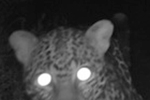
(02/25/2013) Last year, Roger Peet, an American artist, traveled to the Democratic Republic of Congo (DRC) to visit one of the world’s most remote and wild forests. Peet spent three months in a region that is largely unknown to the outside world, but where a group of conservationists, headed by Terese and John Hart, are working diligently to create a new national park, known as Lomami. Here, the printmaker met a local warlord, discovered a downed plane, and designed a tomb for a wildlife ranger killed by disease, in addition to seeing some of the region’s astounding wildlife. Notably, the burgeoning Lomami National Park is home to the world’s newest monkey species, only announced by scientists last September.
In search of conflict-free tin from the Congo
(02/12/2013) I am excited to be returning to the Democratic Republic of Congo (DRC) this weekend. My previous visit in January and February of last year was with a delegation aiming to analyze and audit the first conflict-free supply of tantalum from the DRC via the Solutions for Hope ‘closed pipe’ project. The success of Solutions for Hope, which Motorola Solutions helped to found with AVX, proved that it is possible to source minerals from the DRC through a secure, traceable chain of custody from mine to smelter. This trip extends from that work with the Conflict-Free Tin Initiative (CFTI).
Remarkable new monkey discovered in remote Congo rainforest

(09/12/2012) In a massive, wildlife-rich, and largely unexplored rainforest of the Democratic Republic of the Congo (DRC), researchers have made an astounding discovery: a new monkey species, known to locals as the ‘lesula’. The new primate, which is described in a paper in the open access PLoS ONE journal, was first noticed by scientist and explorer, John Hart, in 2007. John, along with his wife Terese, run the TL2 project, so named for its aim to create a park within three river systems: the Tshuapa, Lomami and the Lualaba (i.e. TL2), a region home to bonobos, okapi, forest elephants, Congo peacock, as well as the newly-described lesula.
Gang raids remote national park in the Democratic Republic of the Congo
(07/26/2012) Mai mai rebels, likely linked to poachers, raided the headquarters of the remote Upemba National Park last weekend, reports the Frankfurt Zoological Society (FZS) which is working to rehabilitate the park in the Democratic Republic of the Congo (DRC). Fortunately, no one was injured in the raid, but equipment was stolen. The raid comes only a few weeks after a different group of rebels murdered seven people and shot dead 13 captive okapis at the Okapi Wildlife Reserve.
Innovative conservation: bandanas to promote new park in the Congo
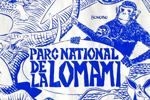
(07/16/2012) American artist, Roger Peet—a member of the art cooperative, Justseeds, and known for his print images of vanishing species—is headed off to the Democratic Republic of the Congo (DRC) to help survey a new protected area, Lomami National Park. With him, he’ll be bringing 400 bandanas sporting beautifully-crafted images of the park’s endangered fauna. Peet hopes the bandanas, which he’ll be handing out freely to locals, will not only create support and awareness for the fledgling park, but also help local people recognize threatened species.
Poacher known as ‘Morgan’ behind devastating massacre at Okapi Wildlife Reserve
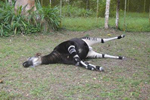
(07/05/2012) Officials have pointed to an infamous elephant poacher known as ‘Morgan’ as the head of the murderous attack at the Okapi Wildlife Reserve station in the Democratic Republic of the Congo (DRC) late last month. The attack by Morgan and his crew left seven people dead, including two wildlife rangers. The poachers also shot dead 13 captive okapis at the headquarters, which were considered ambassadors for the imperiled forest. One okapi remains alive, but injured and conservationists are not optimistic about its survival. UNESCO and the the NGO Fauna and Flora international have issued an emergency appeal to raise $120,000 dollars within two weeks for the victim’s families as well as for rapidly rebuilding the station.
Militia massacres rangers, 13 endangered okapi at Congo wildlife reserve
(06/29/2012) Two wildlife rangers were among the six people killed during brazen attack on a wildlife facility by a militia in the Democratic Republic of Congo last Sunday. 13 endangered okapi were slaughtered during the early morning raid, which was reportedly a response to a crackdown on illegal elephant poaching and gold mining inside the Okapi Wildlife Reserve.